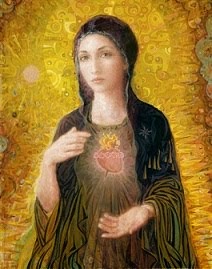“The supernatural may immediately be grasped only when nature is elevated and enlightened by grace.” –Edith Stein
“The meaning of symbol is perhaps most properly fulfilled when what we know leads us to something we do not know.” –Edith Stein
“In a way the symbolism of the human body is like this. Its whole external appearance points beyond itself to something disclosed thereby.” –Edith Stein
“Without ‘expression’ we would have no access to the being of someone else’s soul.” –Edith Stein
The Baptism of Jesus
the universal significance of water
Genesis 3:1-8, Matthew 3 through 4:17
- After He took leave of His blessed Mother, Christ our Lord, went from Nazareth to the River Jordan where St. John the Baptist was.
- St. John baptized Christ our Lord. When John wanted to excuse himself, considering that he was unworthy to baptize Him, Christ said to him, “Let it be so now, for so it becomes us to fulfill all justice.”
- The Holy Spirit descended upon Him, and the voice of the Father testified from Heaven, “This is my beloved Son, in whom I am well pleased.”
The Marriage Feast in Cana
the universal significance of man and woman
John 2: 1-16
- Christ our Lord and His disciples were invited to the marriage feast.
- His Mother calls her Son’s attention to the lack of wine.
- He changes water into wine.
Proclaiming the Kingdom
the complementarity of healthy communication and virtue
Matthew 5
- He speaks apart to His beloved disciples about the beatitudes.
- He exhorts them to use their talents well.
- He shows that He is not a transgressor of the law but a fulfiller. He explains the precept not to kill, not to commit adultery, not to swear falsely, and to love our enemies.
The Transfiguration
the realization of Divine Love’s presence
Matthew 17: 1-9
- Christ our Lord took with Him His beloved disciples Peter, James, and John.
- He spoke with Moses and Elijah.
- While St. Peter was saying they should build three tents (tabernacles), a voice came from heaven. When the disciples heard the voice, they fell on their faces in great fear, BUT Jesus came to them and touched them and said, “Arise and do not be afraid.”
Establishing the Eucharist
the significance of sharing a meal
Matthew 26: 17-30, John 6:22-71, and John 13: 1-30
- Jesus ate the Paschal Lamb with His twelve Apostles to whom He foretold His death.
- He washed the feet of His disciples, even those of Judas. He began with St. Peter who, considering the majesty of the Lord and his own lowly estate, would not permit it. Peter did not understand that Jesus was giving him an example of humility.
- He instituted the most Holy Sacrifice of the Eucharist as the greatest proof of His love, saying, “Take and eat.” When the supper was finished, Judas went forth to sell Christ our Lord.
*All meditation bullet points from Ignatius. These can be done with the five luminous mysteries of the rosary. Take your time, and let yourself be inspired.
God bless…







